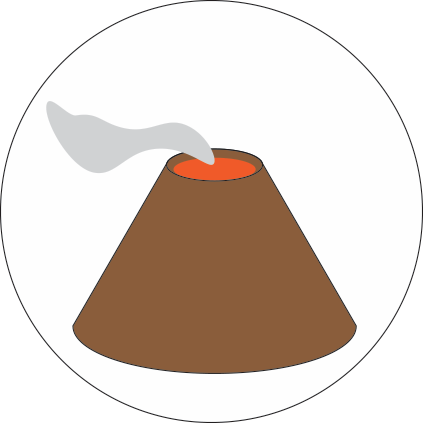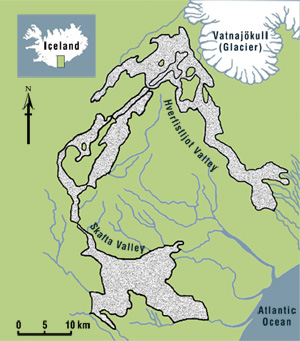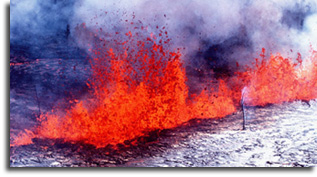

In 1783 the Laki fissure system, southwest of the Vatnajökull glacier in Iceland, produced one of the largest lava flow eruptions in historic times.
About 15 cubic kilometers of basaltic magma was erupted from the 27 km long fissure at Laki. The eruption lasted from May 1783 to May 1785.
The resulting lava flow flooded an area of 565 square kilometers (see the map below) and produced a large number of scoria and tuff cones along the fissure.
Two churches were overrun and more than 30 farms were partially damaged or completely destroyed.


The 1783 Laki eruption had a devastating effect on the Icelandic population. During peak episodes of the event, large portions of Iceland were covered by fine volcanic ash and haze (gases and aerosols). These are a few of the major impacts of the eruption:
A large release of gas during the eruption produced a dry fog or haze over Iceland and parts of Europe.
Grass growth was stunted and fish catches decreased dramatically.
50% of Iceland's grazing livestock died in less than one year.
The total Icelandic population decreased by about 25% following the eruption.